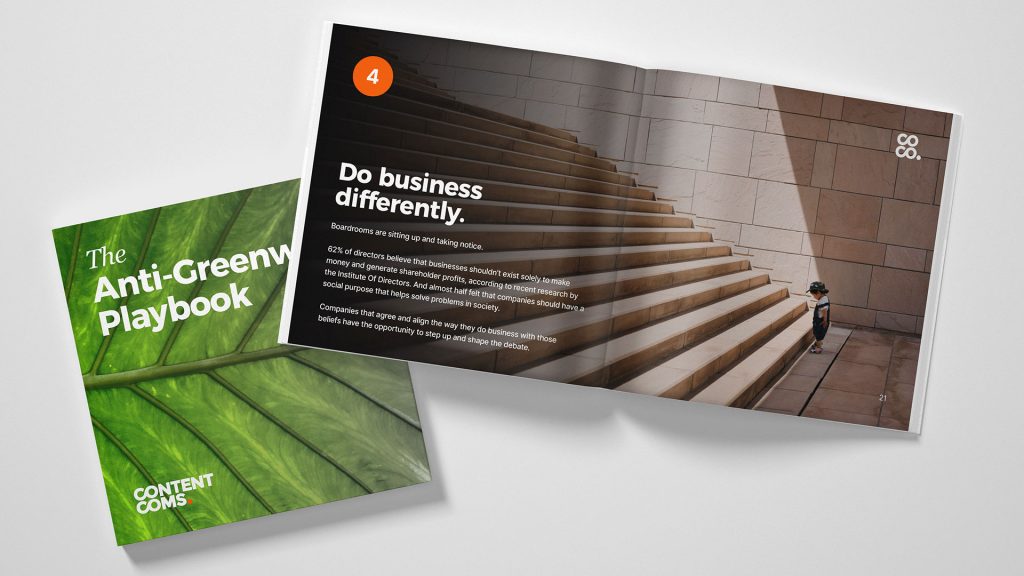
- By Esther Griffin
- In Thinking, Useful Stuff
Making green claims: a checklist for transparent communications
40% of firms are doing it and half of marketers fear it. We’re talking about greenwashing – the thorny issue that even the most well-intentioned brands can fall foul of.
As a communications agency in the clean tech and energy space, we’re increasingly called upon to help businesses “greenwash-proof” their messaging. Our clients are doing some (seriously) amazing stuff to shift the dial on decarbonisation – but in a noisy market, they need to make sure that what they say is clear, meaningful and substantiated. With over half of consumers prepared to boycott brands that greenwash, the stakes are high.
So, how do you communicate your brand’s sustainability creds without falling into the greenwashing trap? The Green Claims Code is a great starting point. Created by the Competition and Markets Authority, it sets six guiding principles to use when making green claims:
- Be truthful and accurate. Whether it’s website copy, social media or your sustainability report, put yourself in the customer’s shoes and consider how they would interpret your claims. A recent advert for Lipton Iced Tea was banned by the Advertising Standards Authority, for implying a bottle was “100% recycled”, when the cap and label was not. This was despite the small print (it was considered too small – and therefore easily missed).
- Be clear and unambiguous Absolute claims such as ‘environmentally friendly’, ‘eco’, or ‘sustainable’ don’t mean much and are likely to mislead. Instead, provide comparative claims (for example, “reduces emissions by 43%”), with data to back them up.
- Don’t omit or hide important information. Do your claims need context? In 2022 the ASA banned an advert by HSBC that highlighted its green investments. The ad accurately stated that HSBC was committing $1 trillion in financing for the net zero transition… but omitted to mention their substantial ongoing financing of oil, gas and coal. The ASA ruled that the average consumer would be mislead into thinking the company was making a positive overall environmental contribution – and banned the ad.
- Make fair and meaningful comparisons. Before making a claim, ask yourself:
Is the claim comparing like with like? Is the like for like comparison a fair and representative one?
- Substantiate your claims. Make sure you have evidence that is robust, credible and up to date. Third party verification can be an excellent way of providing this.
- Consider the overall lifecycle of your product, from creation to disposal. Claims that reflect the whole cycle, or the most significant elements of the product’s environmental impact, are less likely to be misleading.
How we can help
If you’d like advice on improving transparency in your marketing and communications, get in touch. Or better still, come and meet us at the All-Energy conference in Glasgow on 15 and 16 May 2024. We’re running a marketing clinic for clean tech companies on stand D50 – we’d love to see you.
You can also take a read of our Anti-Greenwash Playbook… which is the de facto guide to avoiding greenwash.


